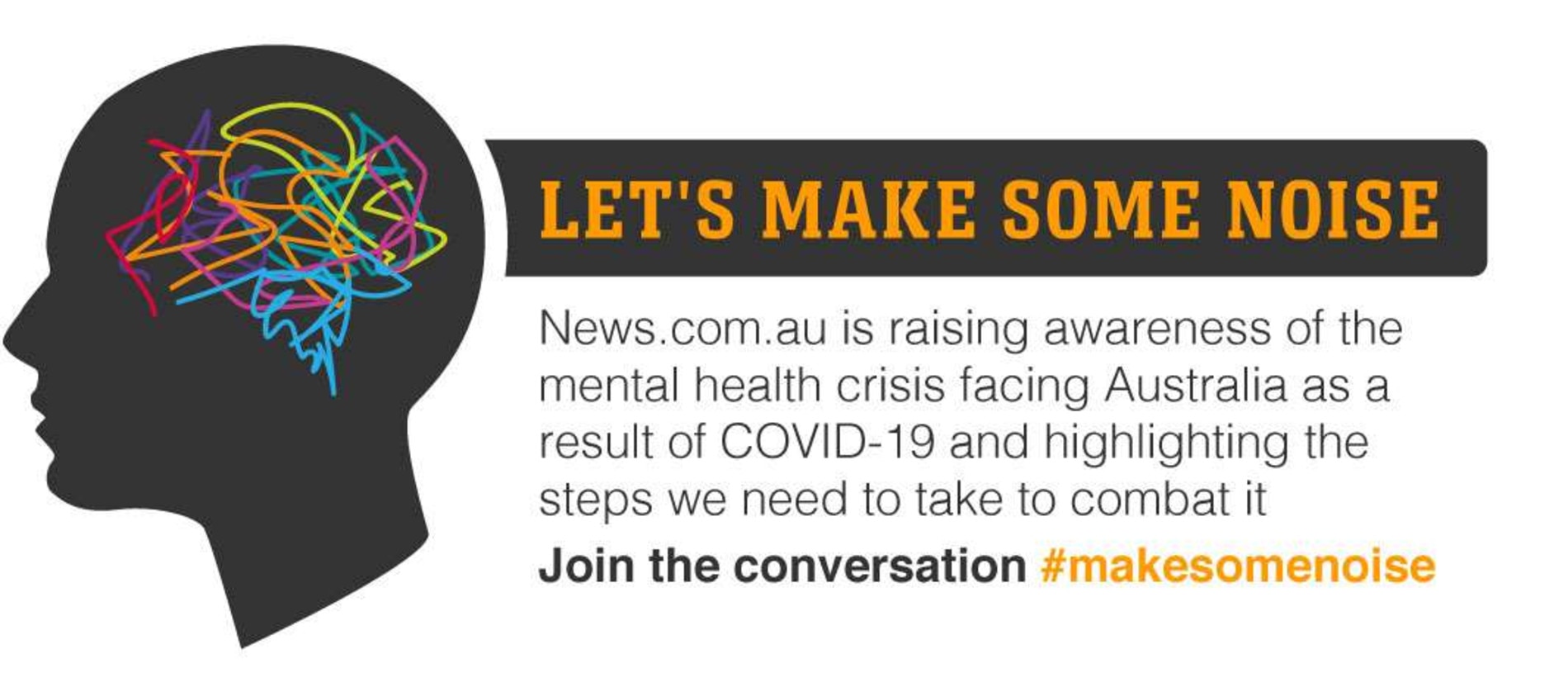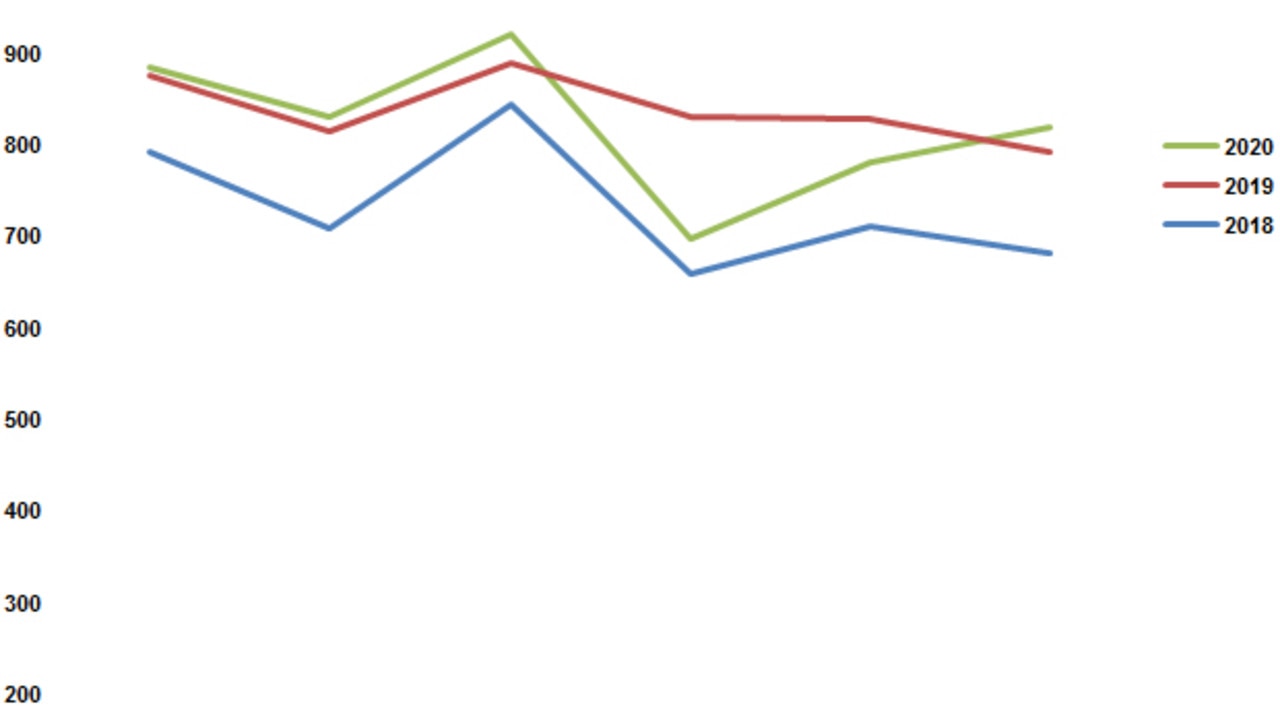New national suicide and self-harm monitoring system shows impact of coronavirus in Australia
New figures show many Australians aren’t coping with the impacts of the coronavirus and this is having some tragic consequences.
New figures show the impact of the coronavirus pandemic including an increase in self-harming behaviour in Victoria and a link to suicides in Queensland.
The Australian Institute of Health and Welfare (AIHW) together with the National Mental Health Commission (NMHC) has today launched a website that provides more timely monitoring of suicide and self-harm data.
Previously it would take up to 18 months for statistics to be released and experts have criticised the lack of real-time monitoring.
However, it’s hoped the National Suicide and Self-harm Monitoring System website will soon see monthly reports provided from each state, with many already providing regular data.
The world-first system includes information on ambulance attendances for suicide attempts, suicidal ideation, self-injury, and mental health.
The monitoring of suicide in particular has taken on a sense of urgency, with experts warning that lockdowns required to control the coronavirus, as well as huge job losses, could lead to an increase in cases.
While figures so far don’t appear to show a surge in suicide, there has been a noticeable 17 increase in self-injury in Victoria.
Previous self-harm is a strong risk factor for suicide so monitoring of intentional self-harm is seen as key to suicide prevention.
Self-injury can include behaviours such as cutting, burning or hitting oneself, with or without the intention of dying.
It is often a response to distress, with some people finding the physical pain provides temporary relief from emotional pain.
Data available for the first time as part of the establishment of the National Ambulance Surveillance System (NASS) shows that ambulance attendances related to self-injury between January and June in Victoria, were up 17.6 per cent compared with 2019.
An AIHW spokeswoman told news.com.au there were 2106 ambulance call-outs in 2020 for a self-injury incident, compared to 1791 in 2019.
A review by the Australian Bureau of Statistics (ABS) of reports and coronial findings found a “personal history of self-harm” was the most common risk factor associated with suicide, it was reported in 17.8 per cent of deaths by suicides for men and 30.9 per cent of deaths by suicide for women.
Even prior to the pandemic, rates of self-harm in Victoria were higher than in other states that have provided data.
RELATED: Mental health crisis looms, expert warns
RELATED: Free mental health and wellbeing support

In 2019, the rate of self-injury among Victorians was estimated to be 18.3 per 100,000 people. In NSW it was 17.2 and in Tasmania it was 12.5. Only the ACT was higher, at 27.
Women generally have higher rates of hospitalisations for intentional self-harm than men, although men have higher rates of suicide.
The ambulance data also showed a 13 per cent increase in mental health attendances, which is consistent with the greater use of mental health services seen in other data.
“This highlights the fact that greater use of, and need for, mental health services does not necessarily equate to trends in the number of suicide attempts,” the website says.
“The vast bulk of people who use mental health services will never have a suicide attempt but timely access to mental health services could reduce the number of deaths by suicide.”
The NASS is a partnership between Turning Point, Monash University, Eastern Health (Victoria) and jurisdictional ambulance services across Australia.
COVID LINK TO SUICIDES
In more positive news, ambulance attendances linked to suicide attempts in Victoria were similar to figures in 2018 and 2019, although separate data in Queensland has suggested a link between the coronavirus and 28 suspected suicides.
In Victoria the total number of ambulance attendances for suicide attempts between January and June was 2 per cent lower than for the same period in 2019.
Attendances for suicidality (thinking about suicide) were 4 per cent higher in 2020 but were also fairly similar across the two years.
While the website currently only includes 2019 ambulance data for Victoria, Tasmania and the Australian Capital Territory (ACT), as well as data from the fourth quarter of the year for New South Wales (NSW), it’s hoped that monthly data for all jurisdictions will be made available from mid-2021.
However, coronavirus seems to have been a factor in at least 28 suspected suicides this year.
Data on suspected suicides in 2020 has been released for both Victoria and Queensland as part of the suicide register project.
This data is from Coroners located in each state, as opposed to ambulance data, and final figures may vary as investigations take place.
RELATED: Young women struggling with COVID impacts
RELATED: Three things every Australians should do for mental wellbeing

Australia is one of the few OECD countries to release this data, with New Zealand being the only other jurisdiction to do so.
So far the statistics published as part of these registers don’t show any increase in Victoria or Queensland in deaths but COVID-19 did appear to contribute to 28 suspected suicides in Queensland.
Data from 2020 iQSR found that police officers mentioned the coronavirus in 32 of 454 suspected suicides up until July 31 this year. In four of these cases it was unclear if COVID-19 contributed to the suspected suicide but 28 appear to be linked to the pandemic.
It’s believed that in 14 of these people, the coronavirus may have impacted their suspected suicide through affecting mood, coping, stress and anxiety.
Another 11 were impacted through employment, eight due to social isolation, five due to changes in access to healthcare support and items, one due to relationship breakdown and one due to finances.
The result points to the value of support offered to people who say the pandemic has impacted their mental health, employment, social connections, relationships, access to healthcare and finances.
Suicide registers currently exist in Victoria, Queensland, Tasmania and Western Australia. NSW is aiming to have a register established by October 2020, while the AIHW is working with South Australia, the ACT and the Northern Territory on establishing registers.

RISE IN USE OF CRISIS LINES
The use of crisis lines and mental health services has also increased since the start of the pandemic with calls to Lifeline between August 10 and September 6, up by 15.3 per cent compared to the same period in 2019.
Contacts to Beyond Blue, including calls, web chat and email, were up 38.6 per cent, and contacts to the Kids Helpline were up 24.5 per cent.
The use of crisis lines in Victoria in particular have risen compared to other states.
There has also been an increase in the use of Medicare subsidised mental health services.
In Victoria there was a 20 per cent increase in people using the services in the four weeks to September 6, compared to the same period in 2019.
Across Australia, access to these services was up 12.5 per cent.
Over a third of these services was provided through telehealth.
The statistics support the views of psychologists, who have previously told news.com.au that demand for their services have increased.
RELATED: Federal Government’s $48m mental health plan
PREVENTING SUICIDE
It’s hoped the information provided on the new website will support governments, services, and communities to better respond to suicide and self-harm.
“This brings together the most comprehensive collation of data to date for suicide deaths and self-harm across eight states and territories in a single, web-based, interactive and integrated platform,” AIHW deputy chief executive officer Matthew James said.
NMHC chief executive officer Christine Morgan said preventing suicide and suicidal behaviour was a key priority in Australia.
“Every life lost to suicide is one too many,” she said. “We can all take action to prevent suicide with some understanding of who is at risk with simple steps.
“This new national system and the representation of the data, will help facilitate public conversations about suicide, self-harm, and suicide ideation, potentially saving lives.”




